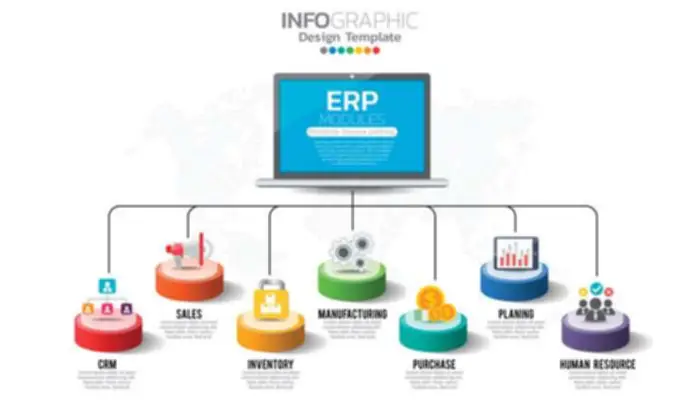Focus on constructing a shared understanding throughout your team and with stakeholders. Some specialists believe that the fifth stage is essential for teams that must disband after finishing a project. Some groups do come to an finish what are the four stages of team development, when their work is accomplished or when the organization’s needs change.
Implementing The Tuckman Model In Your Business
Leaders might help the team members via this transition by acknowledging their contributions, offering closure, and celebrating their achievements. It’s also a chance to capture lessons realized and carry them forward into future initiatives. You and your teammates belief one another enough to get slightly inventive and innovative, whereas nonetheless delivering top-notch work on time. Remove obstacles by coordinating tightly with adjacent and upstream groups.
The 5 Levels Of Tuckman’s Mannequin:
For instance, a study by Dr. Alex Jones examined the implementation of Tuckman’s model in a small group of graduate students finding out business at the American University in the Emirates. The study targeted on the influence of the model throughout a negotiation role-play involving younger leaders. The findings affirmed the model’s practicality for each academia and practitioners within the office. Moreover, the research launched a new Jones LSI mannequin, which is deemed valuable for organizations going through up to date challenges (Jones, 2019). Recently, a number of groups in our engineering division undertook an enormous, ludicrously advanced, business-critical infrastructure project.

Utilizing The Phases Of Team Growth

You’re undecided who is doing what, or tips on how to break this epic project into smaller elements. It was first proposed by Dr. Bruce Tuckman in 1965 and has since been used by organizations worldwide to assist enhance team efficiency. The core premise of contingency principle is that there’s no universally right way to lead a staff or make selections. Instead, it advocates for a technique that’s versatile and adaptable to the situation at hand. You also wants to continue providing much-needed context to the team.
- During the Forming stage, a lot of the staff’s vitality is focused on defining the staff so task accomplishment could also be relatively low.
- Tuckman’s 5 Stages of Team Development has since shaped the premise of many future team and group fashions, and is used extensively by administration consultants and in team-building.
- This comprehensive review aimed to debunk myths surrounding the model and provide insights into the subsequent technology of staff improvement strategies.
- Team improvement involves bringing collectively a team of people with different expertise and information to work on a project.
Understanding The Tuckman Model: Group Development Phases
He argued that group members have a tendency to seek a stability between undertaking the duty and constructing interpersonal relationships in the group. At one level the focus shall be on the previous, at one other on the latter. The result is, successfully, a motion between norming and performing. Below we now have represented Tuckman’s preliminary mannequin in a way that follows the same phases however allows for issues recurring at completely different points in a group’s life. In its preliminary phases, a model new staff operates with common effectivity. As it begins working on challenging tasks and conflicts come up, there’s often a dip in effectiveness.
As individuals start to really feel safer, they may push the boundaries arrange by the group in the forming stage—and conflicts may begin to erupt. Uncover the intricacies of the Scrum process and learn the way this agile framework can revolutionize project management. At Better Change, we consider within the energy of team collaboration to deliver value in organisations. An necessary and sometimes missed elements of that is the use of Sprint Goals. They are clear, concise aims set for every Sprint that provide path and focus to Scrum groups. Resistance is overcome in the third stage in which in-group feeling and cohesiveness develop, new requirements evolve, and new roles are adopted.
LogRocket simplifies workflows by permitting Engineering, Product, UX, and Design teams to work from the identical information as you, eliminating any confusion about what must be carried out. The Adjourning stage in Tuckman’s model is an important phase where the team disbands after attaining its objectives. This stage entails each reflection on the team’s accomplishments and preparation for future transitions. Team members usually experience a combine of feelings, together with pride of their achievements, unhappiness at parting ways, and uncertainty about what lies ahead. The astronauts, no longer simply colleagues but companions, have been within the spacecraft, prepared for the journey of a lifetime. They had become a high-performing team, able to anticipate each other’s moves, work easily collectively, and solve problems shortly and efficiently.
If the staff is profitable in setting extra versatile and inclusive norms and expectations, members ought to expertise an elevated sense of consolation in expressing their «actual» ideas and feelings. Team members really feel an increasing acceptance of others on the team, recognizing that the number of opinions and experiences makes the group stronger and its product richer. Members begin to really feel part of a staff and might show pride from the elevated group cohesion. Alasdair A. K. White collectively together with his colleague, John Fairhurst, examined Tuckman’s growth sequence when growing the White-Fairhurst TPR mannequin. They simplify the sequence and group the forming-storming-norming phases collectively because the «remodeling» phase, which they equate with the preliminary efficiency stage. This is then followed by a «performing» section that leads to a brand new performance level which they name the «reforming» phase.

Much like a well-rehearsed theatre performance, the group operates easily with a deep understanding of their roles and obligations. They’re pushed by a shared objective, and every member is motivated and competent to carry out their duties autonomously. We are living in an age the place organisational success is more depending on staff collaboration than ever. In this publish, we delve into the famend Tuckman Model, a comprehensive and insightful framework that illuminates the stages of team growth. It empowers businesses to navigate by way of their teams’ progression effectively, resulting in enhanced efficiency and productivity.

He established clear roles and duties, ensuring that each group member felt valued and necessary. He emphasized the importance of normal staff conferences the place they may assess their progress and handle any points. Most importantly, he fostered a way of shared accountability and ownership for the mission, creating a powerful group spirit. They realized to speak effectively, to compromise, to understand one another’s completely different perspectives. They began to develop common requirements for solving problems and making choices.
It’s the phase where the team’s onerous work pays off, they usually can function with a way of ease and delight, often exceeding their set targets. Tuckman’s ladder model focuses extra on the team’s progress via the four stages, while the COG’s ladder model emphasizes the importance of the team’s goals and goals. Team members may really feel quite lots of issues in regards to the team’s impending dissolution. They could additionally be feeling some anxiousness due to uncertainty about their individual position or future obligations. They may really feel unhappiness or a way of loss concerning the changes coming to their team relationships. And on the similar time, staff members may really feel a sense of deep satisfaction on the accomplishments of the team.
Behaviors through the Norming stage may embrace members making a aware effort to resolve problems and obtain group harmony. There could be extra frequent and extra significant communication amongst team members, and an elevated willingness to share concepts or ask teammates for help. Team members refocus on established group groundrules and practices and return their focus to the team’s tasks. Teams could begin to develop their own language (nicknames) or inside jokes. Even though your function as a product manager entails shaping the product roadmap and driving outcomes, there are times when your primary focus ought to be on supporting your group by way of these five stages.
Team members shift their attention away from task orientation to a relationship focus (McShane et al., 2018, p. 233). During this last stage, the group emotions may be issues and anxiety due to the uncertainty or future. During this stage some members lose focus and scale back productivity and so they focus the tasks in three sections – completion of deliverables, analysis and shutting ( Stein, as cited in McShane et al., 2018). Creately’s visual collaboration instruments are instrumental in the course of the Forming stage. With its sturdy brainstorming capabilities, groups can visually map out their mission and aims, set clear roles, and set up a structured approach to teamwork. During the Forming stage, clear structure and steering are crucial.
Transform Your Business With AI Software Development Solutions https://www.globalcloudteam.com/
